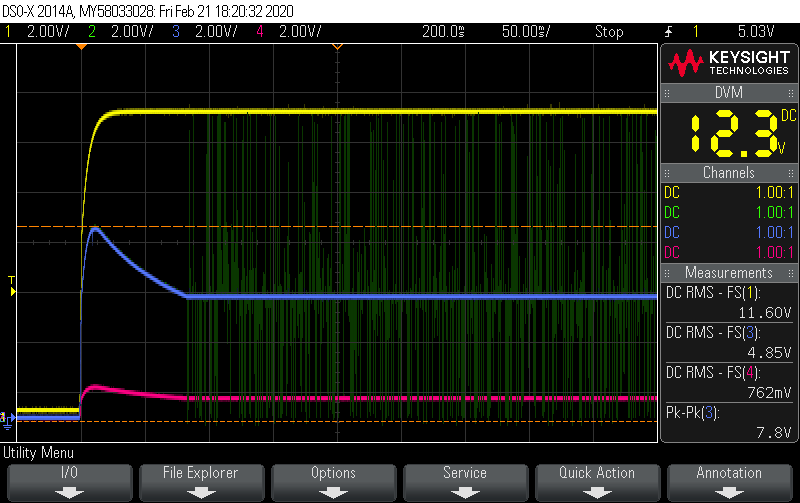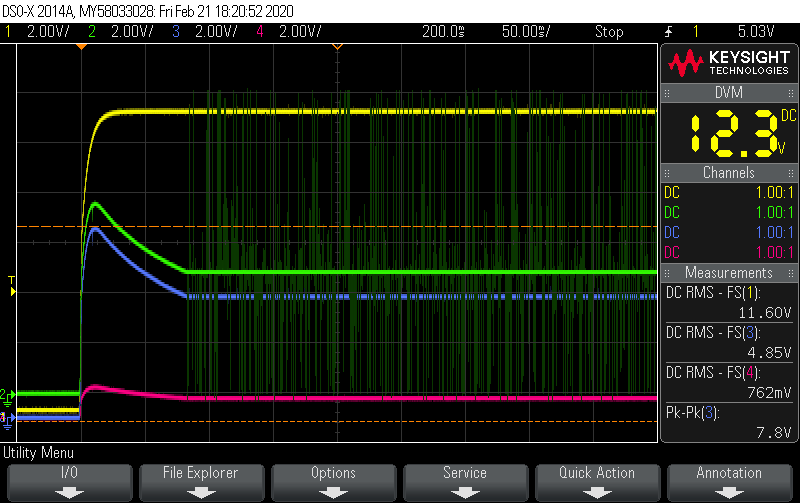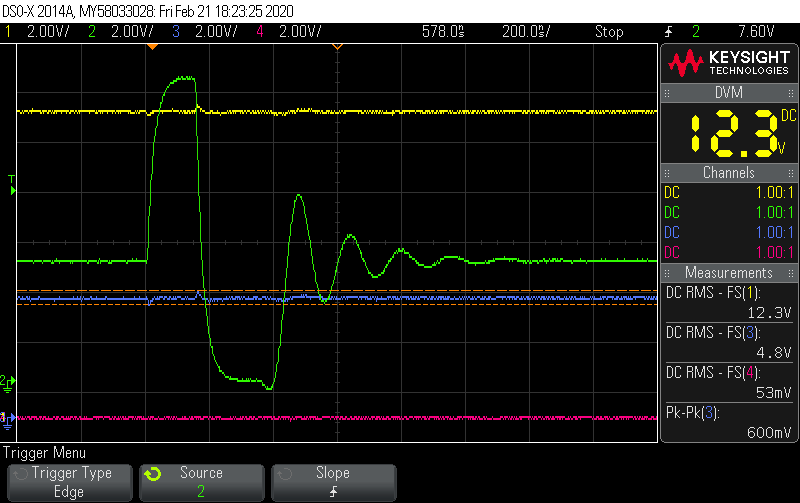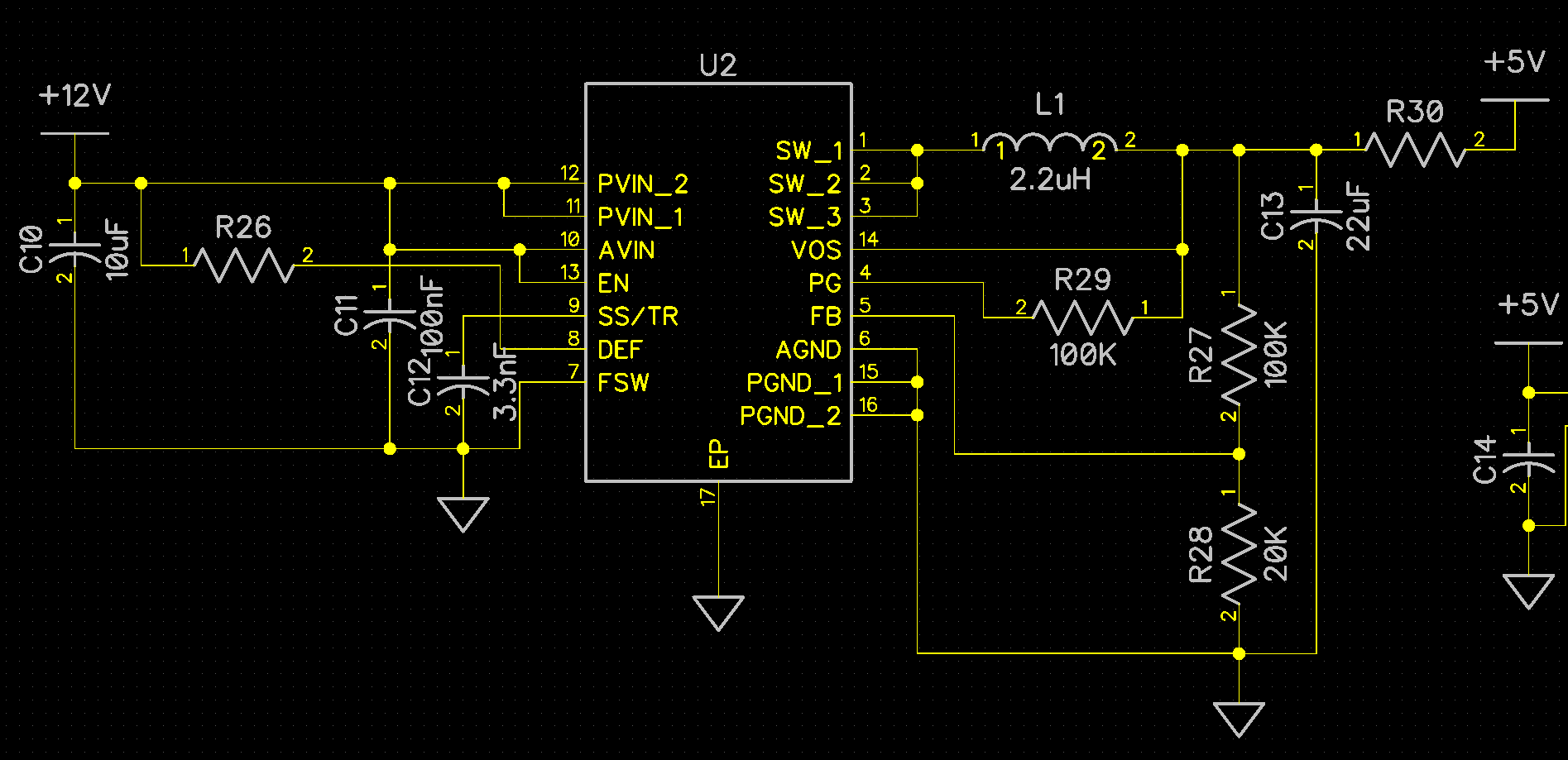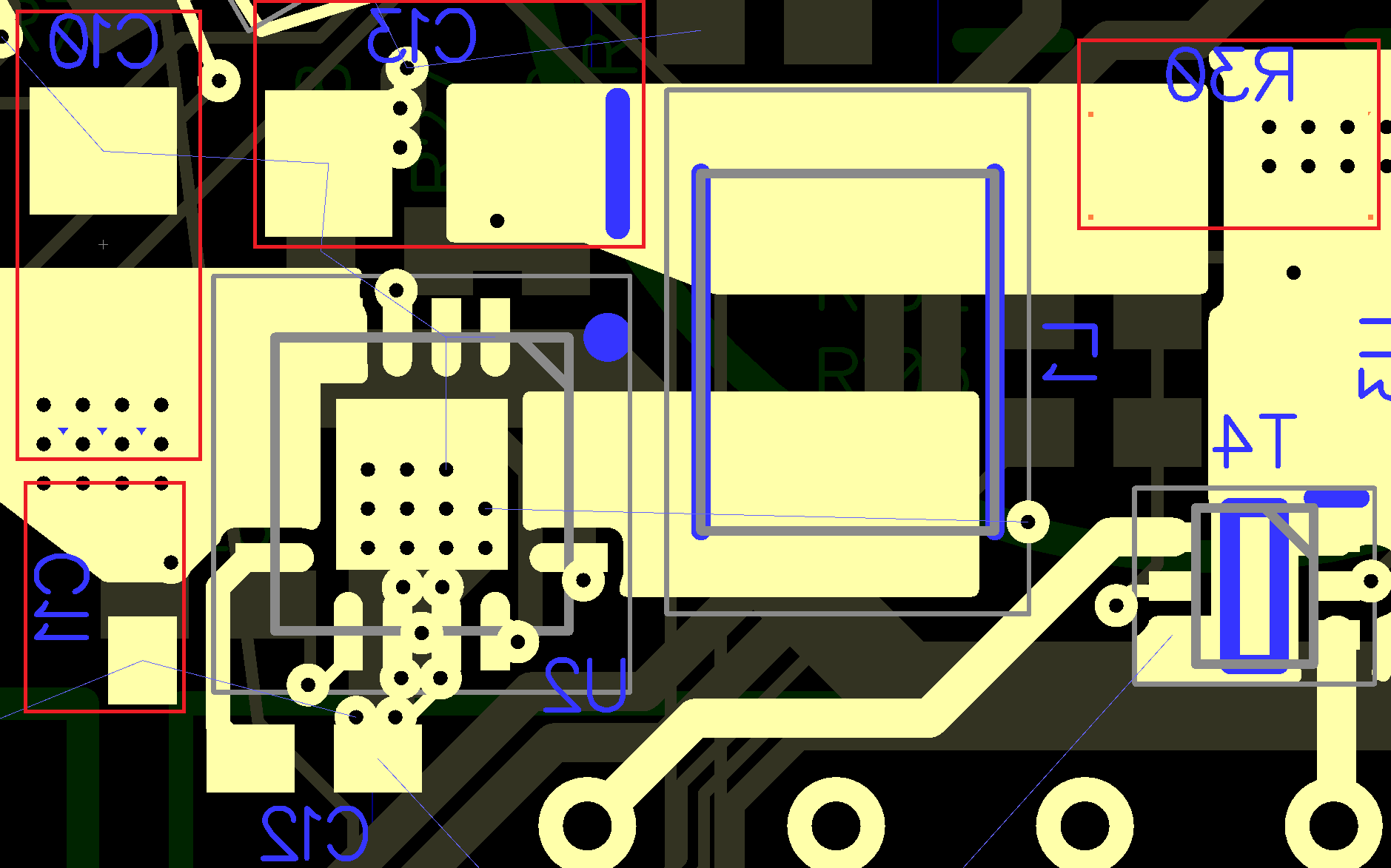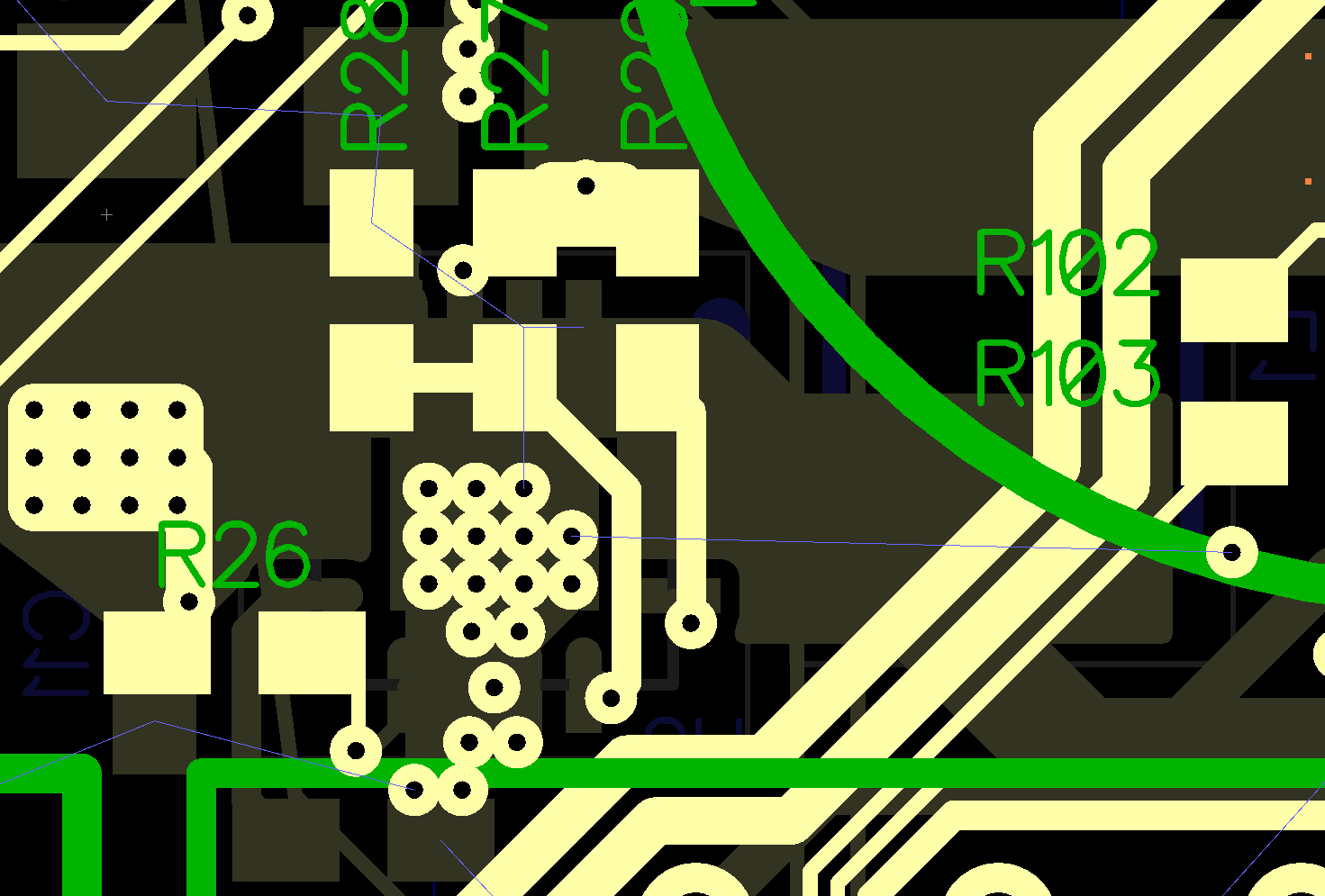Hello there.
I have designed a board based on the typial schematic and layout recommendations described in the datasheet. I am feeding 12VDC, and generating 5VDC using TPS62130ARGTT. Please note that the enabe pin is shorted to the input supply (as suggested in the datasheet). When I plug in the 12V supply, I receive an output voltage of 9VDC, which linearly diminishes to 5VDC in about 35ms, after which it is stable. The device is working nicely under stability, however the transient behaviour of the device (especially the 9VDC output) is lethal to our system.
It would be really appreciable if someone could suggest any measures to curb this transient behaviour.


